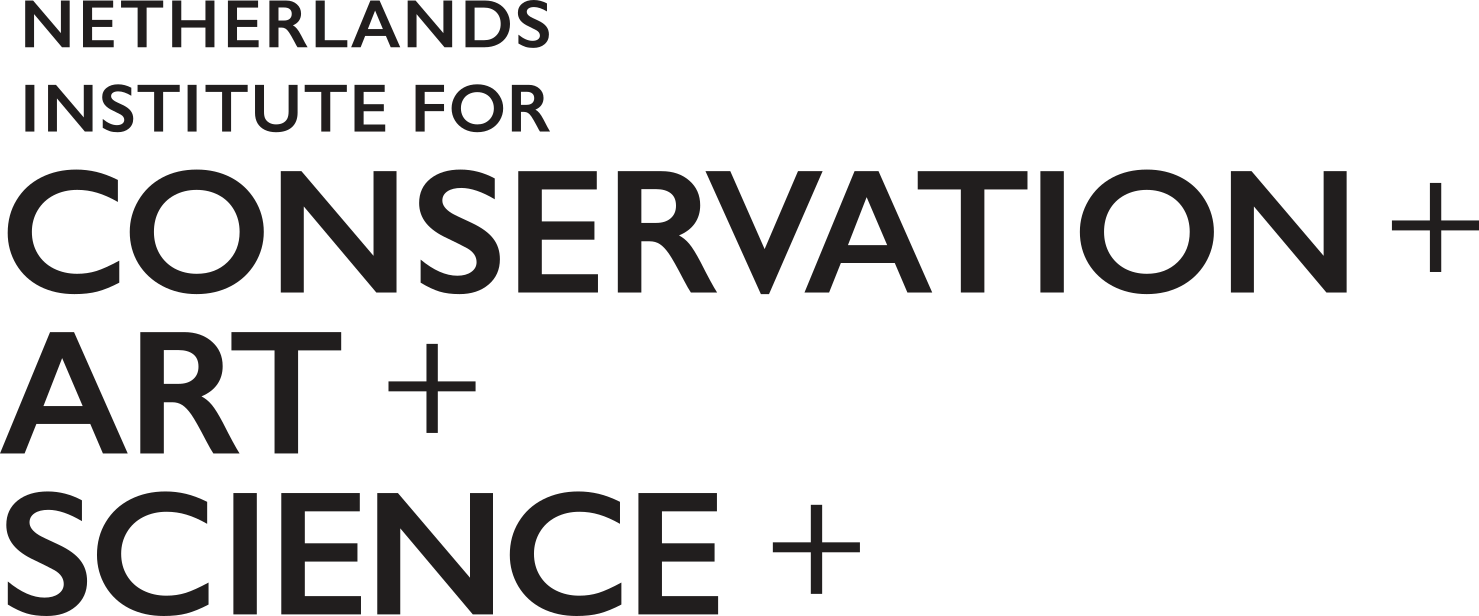Media
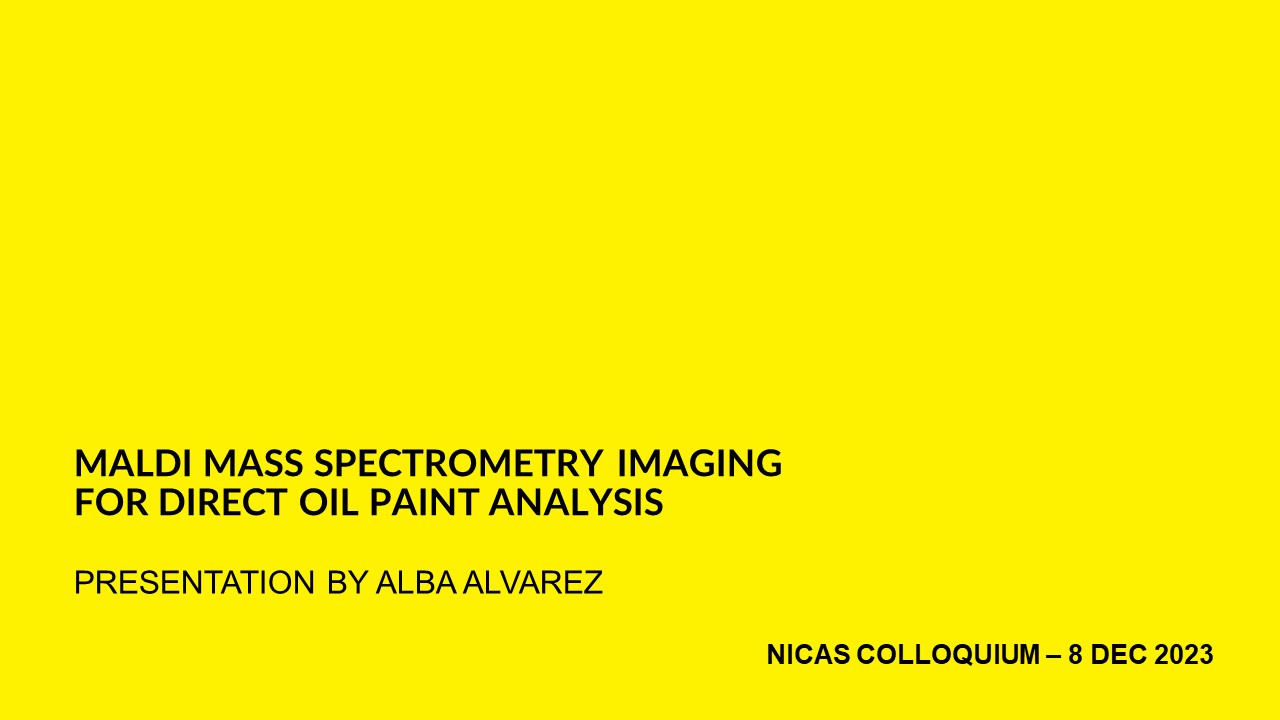
NICAS Colloquium

NICAS Match Day 2023 Panelgesprek
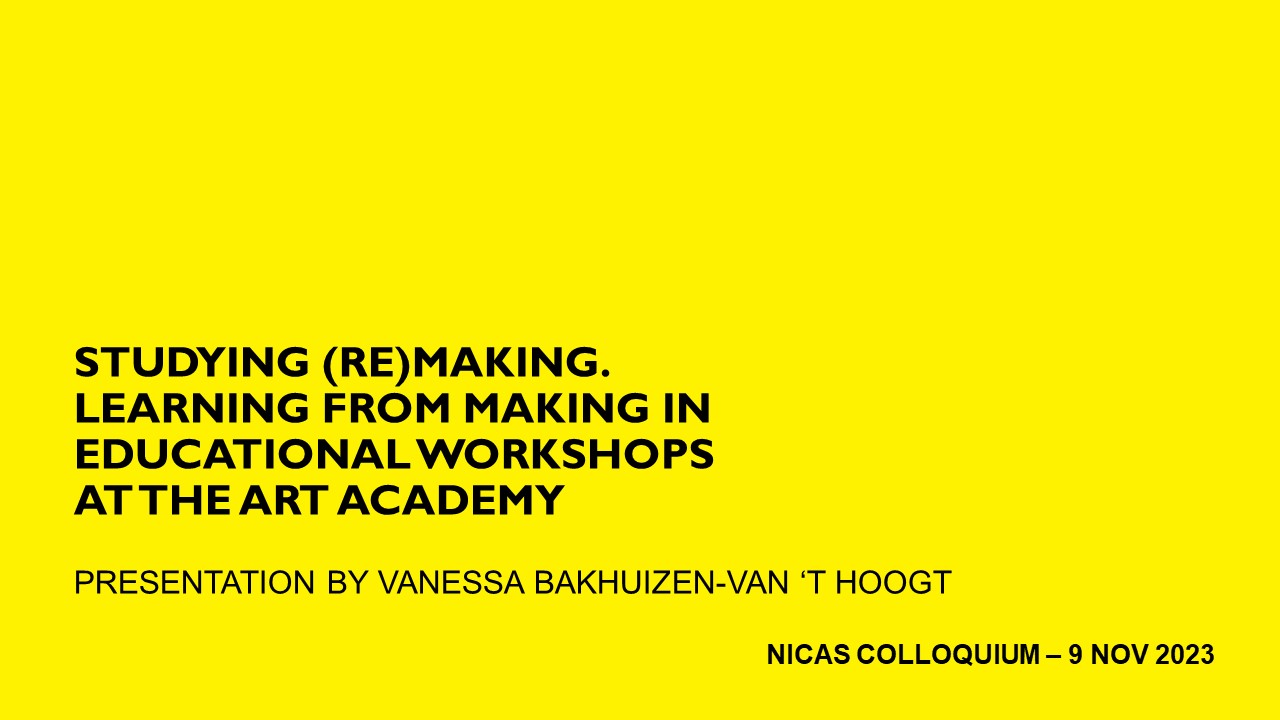
NICAS Colloquium
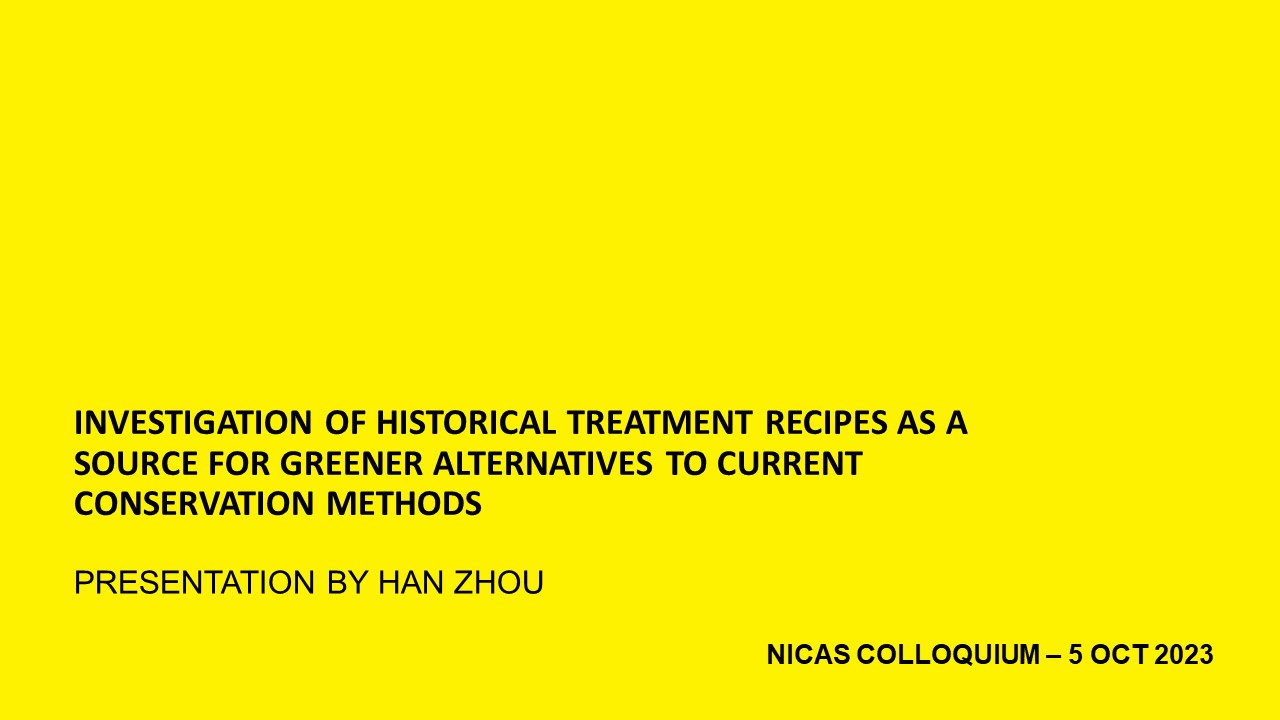
NICAS Colloquium
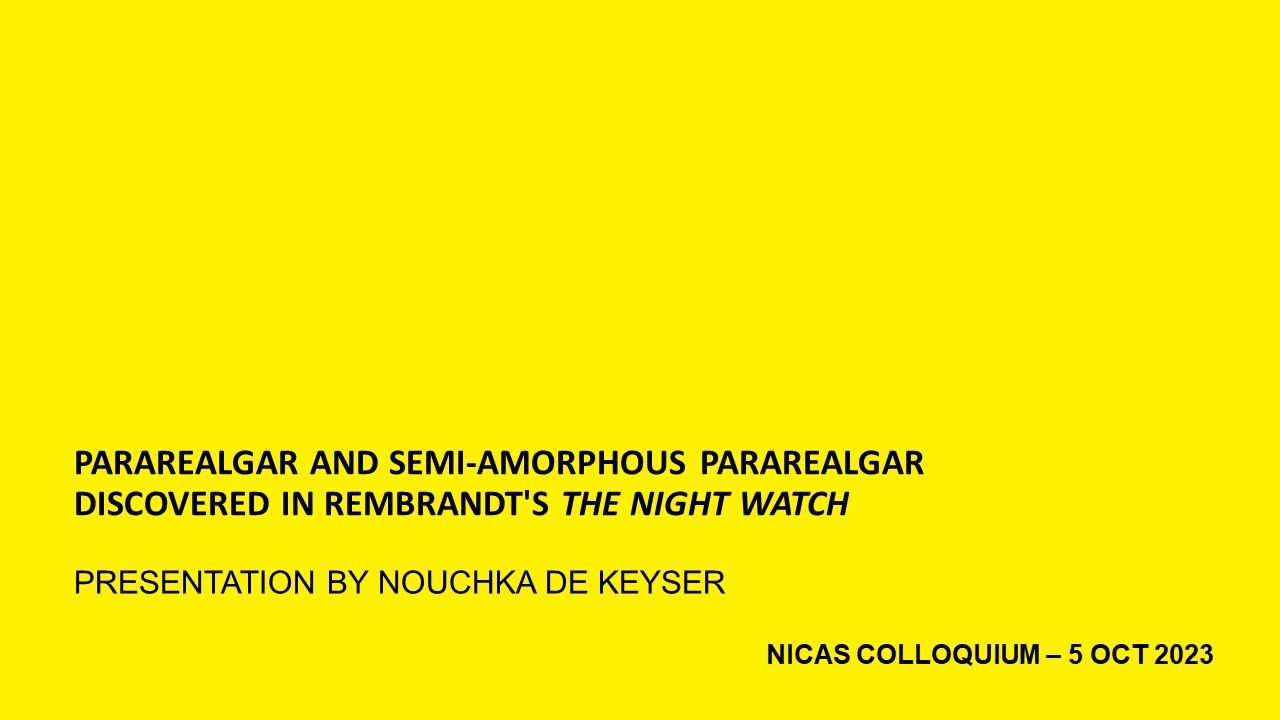
NICAS Colloquium
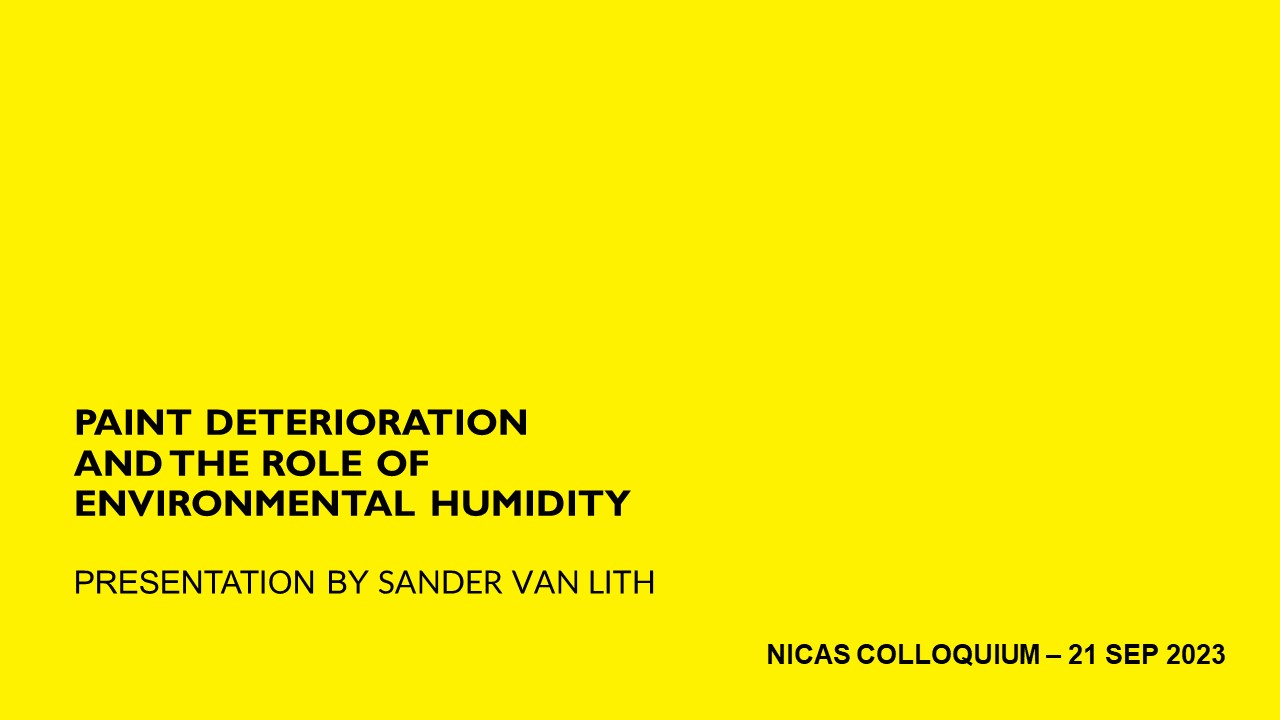
NICAS Colloquium
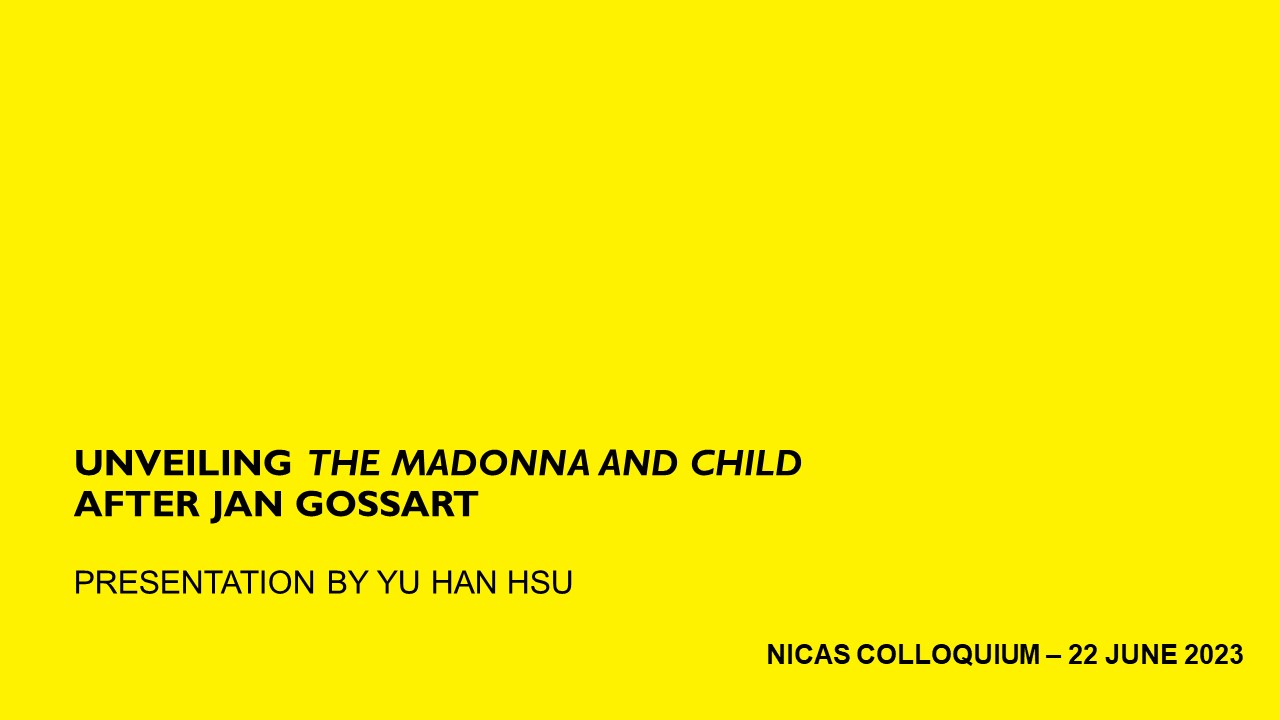
NICAS Colloquium
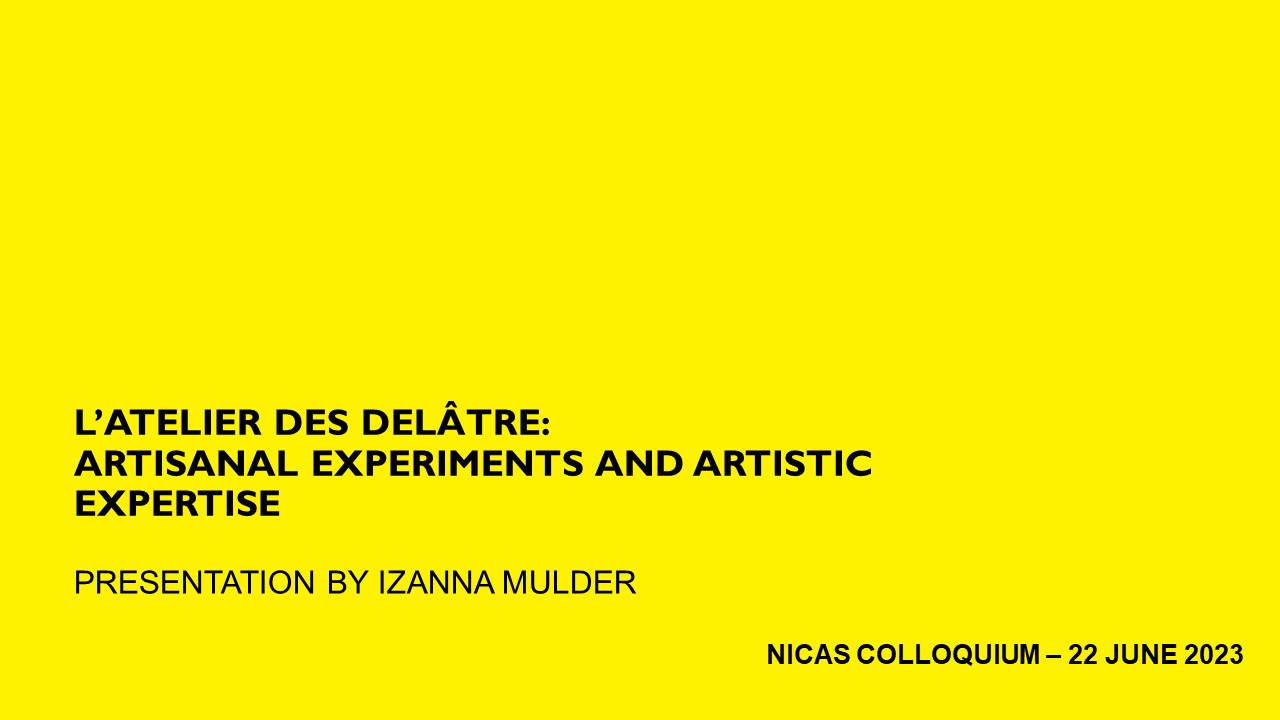
NICAS Colloquium
-
NICAS Colloquium
Alba Alvarez - MALDI mass spectrometry imaging for direct oil paint analysis Abstract: From the moment an artist completes a painting spontaneous and unwanted chemical transformations start to take place, leading to the gradual loss of brightness and intensity of the original colour. Therefore, to gain more knowledge on the chemistry behind these unwanted reactions, impressive advances have been made regarding the identification of inorganic pigments by non-invasive spectral imaging of the painting, and synchrotron radiation based techniques applied to minuscule paint fragments. However, the non-invasive detection of organic pigments remains challenging and becomes especially difficult when the original pigment has degraded or is present at a very low concentration. While traditional separation chromatographic techniques have contributed significantly to the identification of organic pigments, the sample preparation implies the loss of the spatial distribution of the pigment within the paint layers. This talk will address the novel application of Matrix-Assisted Laser Desorption Ionization – Mass Spectrometry Imaging (MALDI-MSI) to visualize the spatial distribution of organic lake pigments and their degradation fragments within the paint sample without extraction, purification and separation steps. Bio: Alba Alvarez is a chemist with master in conservation science and a PhD in environmental chemistry. Since June 2023 she works as a scientist at the Rijksmuseum, where her main research goals are the implementation of more accessible mass spectrometry instrumentation in museums. -
NICAS Match Day 2023 Panelgesprek
Het panelgesprek over de vraag "hoe organiseer je onderzoek in, voor en met musea?' met de panelleden Marlies Stoter (Dries Museum), Anna Tummers (Leiden Univesiteit) en Edwin Buijsen (RCE) en moderator Robert van Langh (NICAS) -
NICAS Colloquium
Vanessa Bakhuizen-van 't Hoogt - Studying (re)making. Learning from making in educational workshops at the art academy Abstract: The lecture presents the research Curious Hands in Educational Workshops. Identifying distinct patterns in teaching and learning making in the art academy, which is part of the project Curious Hands Moving Making to the Core of Education (2019-2026) funded by the Dutch Research Council (NWO). I explain the methodologies that have been developed to study how making is learned and taught in educational workshops of art academies. Based on data collected over the past 3 years in the workshops of Minerva Art Academy in Groningen, I show ethnographic and art-based methods and discuss findings. I present the research matrix, which I developed to study making and propose how this matrix could be of interest for restoration and conservation practices. Applying this matrix, which was developed for a contemporary art and design context, to historical making and/or remaking could offer a possibility to become aware and reflect upon aspects and patterns of these making processes. Bio: Vanessa Bakhuizen-van ‘t Hoogt studied Art, Culture and Media (BA) and art history (MA) in Groningen. She is a lecturer in the Bachelor Fine Art and Design in Education at Minerva Art Academy, Groningen, and teaches at the Faculty of Arts and the Medical Faculty at the University of Groningen. Her PhD project Curious Hands in Educational Workshops. Identifying distinct patterns in teaching and learning making in the art academy researches the potentially powerful effects of making by investigating the role of educational workshops and their socio-material infrastructures in teaching and learning making at the art academy. -
NICAS Colloquium
Han Zhou - Investigation of historical treatment recipes as a source for greener alternatives to current conservation methods Abstract: Before conservation became a profession, how did people treat their objects? How did they clean their tarnished silver collections, or their discoloured paintings on the wall? These wisdoms from the past were recorded as recipes in various historical literature. From a modern perspective, these recipes were developed in a low-tech environment using natural, non-synthetic materials, which means that they could potentially be more sustainable options than current conservation methods. As part of the GoGreen project, this research project investigates these historical treatment recipes through archival research methods and reconstruction-based studies. The aim is to identify the most promising recipes to generate greener alternatives to current conservation methods. For this NICAS colloquium, Han will discuss her current methodological approach, and present her ongoing research in historical recipes for silver tarnish cleaning as a pilot study project. -
NICAS Colloquium
Nouchka de Keyser - Pararealgar and Semi-amorphous Pararealgar Discovered in Rembrandt's The Night Watch: In July 2019, the Rijksmuseum embarked on a large-scale research and conservation project called Operation Night Watch to meticulously study Rembrandt’s The Night Watch (1642). During the research phase, which included multimodal non-invasive chemical imaging and micro-sample analysis, arsenic sulfide pigments were discovered. Using micro-Raman spectroscopy, pararealgar and semi-amorphous pararealgar were identified. In this presentation, the identification of artificial arsenic sulfides will be discussed and put into a larger context based on historical source research regarding manufacturing, trade, price and availability in Amsterdam in the 17th century. Nouchka De Keyser is a researcher at the science department of the Rijksmuseum and as a PhD student affiliated with the University of Antwerp and the University of Amsterdam. Her research focuses on 17th-century paint technology and tries to gain a comprehensive understanding of how and why particular optical effects are systematically more affected by degradation using non-invasive imaging techniques. She is a team member of Operation Night Watch and currently involved in the technical research of Rembrandt’s masterpiece. -
NICAS Colloquium
Abstract: In its lifetime, an oil painting is exposed to air with fluctuating temperatures, humidity, dust but also to conservation treatments like cleaning and consolidation. Water exposure is an important factor, because water absorbed in oil paintings due to environmental humidity or conservation treatments can result in undesirable changes in an oil painting. The presence of water can accelerate change by increasing oil binder hydrolysis, triggering metal soap formation, facilitating ionic reactions, or altering the mechanical properties of paint layers. Ultimately, we aim to develop a damage function for oil paintings to aid decisions on cleaning strategies and designing acceptable indoor climate conditions. During this NICAS colloquium I will share findings from ongoing research in which (long-term) chemical processes of artificially aged paint films are studied. Bio: Sander van Lith started this year as a PhD candidate at the University of Amsterdam and The Rijksmuseum. He obtained his MSc degree in Chemical Engineering with a specialization in materials chemistry from Eindhoven University of Technology in 2020. He is working in the GoGreen project - a European consortium of researchers and conservators dedicated to advancing preventive and remedial strategies for safeguarding cultural heritage. His research focuses on studying the degradation of oil paints under different environmental conditions. Ultimately, he wants to make a well-tailored damage function for oil paints. -
NICAS Colloquium
Yu Han Hsu - Unveiling The Madonna and Child after Jan Gossart Abstract: This presentation will introduce the research and conservation project of The Madonna and Child with a Veil in the Chimei Museum. The painting belongs to a popular copy series from sixteenth-century Antwerp that was modelled on Jan Gossart’s (1478-1532) design. The Chimei Museum acquired the painting via Christie’s of Amsterdam in 1996. However, it had been ignored for decades due to its unsatisfactory condition. In 2019-2020, the painting was finally examined and restored for a small educational exhibition of traditional Western oil paintings. In this presentation, I will first analyze how art historical research and technical studies helped to discover the connections between the Chimei version and other identical versions. In addition, I will also briefly introduce the restoration process of the painting, and the exhibition. Bio: Yu Han Hsu is a PhD candidate at Radboud University, under the supervision of Professor Ron Spronk and Professor Jos Koldeweij. Her primary research interest is the making of painted copies in the sixteenth-century Netherlands. She is also a junior curator at the Chimei Museum and Chimei Cultural Foundation in Taiwan. From 2018 to 2020, she conducted research on the museum's Western art collection to gain insight into the growing trend of collecting Old Masters' works in Asia. Since 2020, Yu Han has been leading a research project on the early Netherlandish painted copies in the Chimei Museum, with the aim of understanding the copyists’ production methods. -
NICAS Colloquium
Izanna Mulder - L’Atelier des Delâtre: Artisanal Experiments and Artistic Expertise Abstract: L'Atelier des Delâtre: Artisanal Experiments and Artistic Expertise is a study on an artistic printing house in Paris. Its owners, father and son Delâtre, had a great influence on developments in 19th- and 20th-century printmaking. The most important artists of the period - think of Picasso, Manet and Cassatt - had their etchings printed by the two printers and also learned themselves the different techniques. The more research is conducted on the atelier, the clearer it becomes that it played a key role in the developments within 19th and 20th-century printmaking as an artform. It is not just the exceptional artworks that have been created there, but also the fact that the realization of these creations could only come about through intense collaboration, in which the artist became a craftsman, and the craftsman became an artist. Bio: Izanna Mulder (MA Curating Art and Cultures) is a freelance curator/researcher and an art history lecturer at the ArtEZ Art Academy. She is currently researching the 19th and 20th century Parisian printing house of Auguste and Eugène Delâtre as an external PhD at the University of Amsterdam. Winning the Prix de Paris has granted her the opportunity to conduct archival research in Paris, exploring artist letters, prints and documents related to the atelier.
